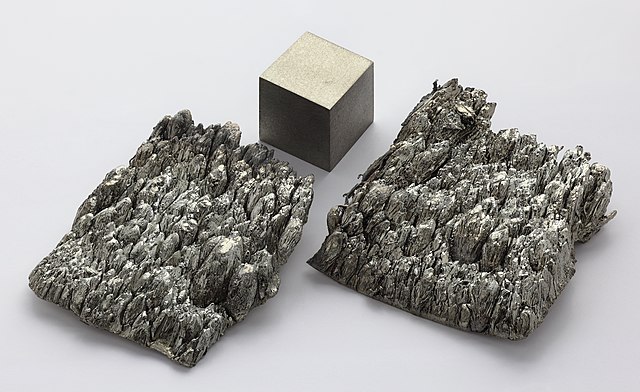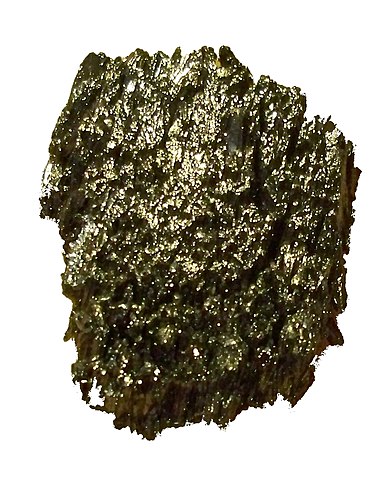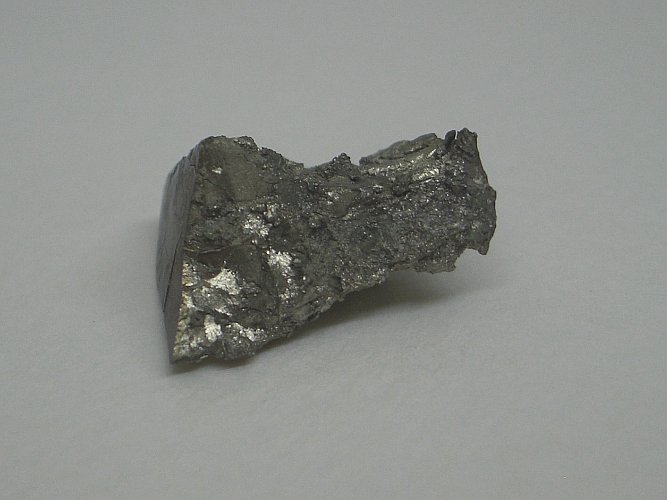Scandium is a rare chemical element found on Earth and used for various industrial and commercial purposes. It is a soft, silver-white metal that has many interesting features, including its ability to absorb and reflect light.
Scandium is a member of the lanthanide group of elements and is often used as a substitute for aluminum in products that require a stronger metal.
Introduction
Scandium is also a highly reactive element, which means it can easily combine with other elements, making it a valuable tool in industries such as energy production and aerospace construction. It is also found in nature in trace amounts, as a byproduct of uranium processing.
In this article, we will delve into Scandium and its various characteristics, including its properties, uses, isotopes, sources, extraction process, environmental implications, and health effects. By the end, you will have a better understanding of this unique element and its important role in the modern world.
The lanthanide group of elements is made up of 15 lanthanide elements, and Scandium is the first and lightest of them all. Scandium’s atomic number is 21 and its atomic weight is 44.956. Its symbol on the periodic table is Sc, and it is a transition metal. Scandium is found in nature in trace amounts and exists as a byproduct of uranium processing. It is often used as a substitute for aluminum in products that require a stronger metal.

Scandium sublimed, dendritic
The properties of Scandium are largely determined by its electron configuration. Scandium has an electron configuration of 4s2 3d1, which gives it the ability to easily combine with other elements. Its melting point is 1541 degrees Celsius and its boiling point is 2836 degrees Celsius. Its density is 2.985 g/cm3 and its atomic mass is 44.956.
Scandium is also a highly reactive element, which makes it an attractive choice for certain industries. It is a soft, silver-white metal that is able to absorb and reflect light. It is non-toxic and non-flammable, and it has a high boiling point of 2836 degrees Celsius.
It is also resistant to corrosion and extreme temperatures, making it a viable option for a variety of industrial and commercial applications.
Properties of Scandium
Scandium has a unique atomic structure that makes it a valuable resource in the industrial and energy-based sectors. It has a silvery-white color, is soft, and is typically found in combination with other elements. Scandium atoms have three electrons in the outer layer, and the electrons are arranged in the shape of a 3d2 configuration. This makes scandium an element that is prone to a variety of reactions, particularly with other elements in its group.
The physical properties of scandium include its lightweight and malleability. It is also a low-melting point element, with a melting point of 1,541°C (2,816°F). Its density is 2.99 g/cm3, and it has an atomic weight of 45.
The chemical properties of scandium are what makes it an interesting material to work with. It is a strong reducing agent, and it is highly reactive with other elements, particularly with sulfides and oxides. It reacts with both acids and bases to produce various compounds, and it can even be used to create alloys with other elements. Scandium is also very reactive with oxygen, and it is capable of forming several oxides.
In terms of its user-selectable properties, scandium is one of the few elements that can be used to create alloys with a variety of other metals. It is very malleable and can be easily alloyed to create a range of products with a range of properties. It can also be used to create a variety of alloys with other materials, making it a valuable resource in the industry.
Scandium is also an interesting element in terms of its reactivity. It reacts with both acids and bases, meaning it can be used in a variety of different reactions. It is also highly reactive with oxygen, meaning it can be used to create various types of oxides.
Overall, scandium is an element with a wide range of properties. Its lightweight, malleability, and ability to create alloys with other materials makes it a valuable resource in the industrial and energy-based sectors. Furthermore, its ability to react with both acids and bases makes it useful in terms of creating various compounds and oxides. Its low melting point also makes it easy to work with and create alloys. All of these factors make scandium a valuable resource and a key component in the industrial and energy-based sectors.
Uses of Scandium
Scandium has a wide range of applications in many industries, including energy, aerospace, and military. Since its discovery in 1879, it has been used in many areas for its unique properties and has become a promising element for a variety of purposes.
In the energy industry, Scandium is used to create efficient and clean burning fuel. By adding Scandium to fuel, it is possible to minimize emissions and increase fuel efficiency. Scandium also has applications in the aerospace industry, as its high melting point and low weight make it an ideal material for the construction of spacecraft and satellites. Its superior strength and light weight also make it an ideal material for the manufacture of military equipment, such as missiles and tanks.
In the medical industry, Scandium is used to create radiation-resistant materials and implants that can help protect patients from the harmful effects of radiation. It is also used in the production of medical equipment, such as pacemakers and other devices. Another use of Scandium is in the production of high-quality glass and alloys for use in the construction industry.
In the automotive industry, Scandium is used for the production of lightweight and strong engine components. Its superior strength and light weight make it a desirable material for the construction of cars, trucks, and other vehicles. Finally, Scandium has applications in the manufacturing of electronics, where its strength and light weight make it ideal for the production of consumer electronics.
Scandium can also be used to create magnets and magnets used in medical imaging. Its superior strength and light weight make it a desirable material for the production of magnets. Furthermore, Scandium is also used in the production of artificial diamonds and other gemstones. Its unique properties make it a desirable material for the production of these types of gemstones.
Scandium has a variety of uses in the manufacturing industry, from the production of medical equipment to the manufacturing of automotive components and consumer electronics. Its unique properties and light weight make it an ideal material for a variety of purposes, making Scandium an important element for many industries.

Isotopes of Scandium
Scandium is composed of seven naturally occurring isotopes, which are scandium-45, scandium-46, scandium-47, scandium-48, scandium-49, scandium-50, and scandium-52. All of these isotopes are stable, except for scandium-50, which is an unstable radioisotope. The most abundant isotope is scandium-45 and makes up approximately 24.85% of natural scandium.
Scandium also has two synthetic isotopes, scandium-51, which is a short-lived radionuclide, and scandium-53, which is a stable isotope. Scandium-51 is produced during the neutron bombardment of stable scandium-48, while scandium-53 is produced through proton bombardment of titanium-50.
The atomic mass of scandium is 44.956 u, which means that it has an atomic mass of 44.956 u + 1 electron or 44.955 u + 2 electrons. This leads to different atomic masses for each of the seven naturally occurring isotopes of scandium. The atomic mass of scandium-45 is 44.955 u, scandium-46 is 45.956 u, scandium-47 is 46.957 u, scandium-48 is 47.958 u, scandium-49 is 48.959 u, scandium-50 is 49.961 u, and scandium-52 is 51.962 u.
The isotopes of scandium can be divided into two distinct categories: natural and synthetic. Natural scandium isotopes are those that are found in nature in significant amounts. These are scandium-45, scandium-46, scandium-47, scandium-48, scandium-49, and scandium-52. Synthetic isotopes are those that are created through the bombardment of a target, such as titanium-50, with either a proton or neutron. In this case, scandium-51 and scandium-53 are the two synthetic isotopes of scandium.
The isotopes of scandium are important because they have different physical and chemical properties. Certain isotopes are more likely to be used in specific applications. For example, scandium-46 is commonly used in the aerospace industry because of its strength and light weight, while scandium-50 is used in the energy industry because of its radioactivity.
Isotopes of scandium can also be used to measure the age of certain materials. Since certain isotopes decay at predictable rates, scientists can use the ratio of two isotopes of scandium to determine the age of a material. This is done by measuring the amount of the isotope scandium-47 in a material and comparing it to the amount of scandium-45, which is a long-lived isotope. The ratio of the two isotopes can provide an estimate of the age of the material.
Overall, isotopes of scandium are important because they offer different physical and chemical properties that can be used in a variety of applications. They are also important for measuring the age of certain materials.
Sources of Scandium
Scandium is a rare element, so it must be extracted either from natural sources or synthetically manufactured. While this element is not present in large amounts anywhere, it does have several different sources. Here, we will discuss both natural and synthetic sources of scandium, as well as the methods used to extract it.
Natural Sources
Scandium is naturally found in small amounts in a variety of minerals, primarily in Scandinavia and Russia. The most significant natural sources of scandium are certain mineral deposits in the Ural Mountains, in Russia; the Kola Peninsula, also in Russia; and in Norway, Sweden, and Finland.
These minerals are usually found in combination with other elements, such as iron, aluminum, and titanium, so the extraction process can be complicated. The minerals are separated from the ore, then heated and dissolved in acid, to isolate the scandium.
Synthetic Sources
In addition to its natural sources, scandium can be synthetically manufactured in nuclear reactors using a process called neutron irradiation. This method involves bombarding naturally occurring elements with neutrons, which then causes them to become unstable and decay into other elements, such as scandium.
This process is much more efficient than mining, and it has been used to produce scandium for a variety of applications. However, it is a very expensive process, and it also produces radioactive waste, so it is not used as often as other extraction methods.
Extraction Process
Once the source of scandium has been located, the extraction process can begin. Normally, the mineral must first be separated from the ore, through a process called beneficiation. After this, the scandium can be separated from the other elements using a process called smelting.
Smelting involves heating the mineral to very high temperatures, which causes its molecules to break apart, and then reassembling them in a different order. This process is used to separate the scandium from other elements, such as iron and aluminum.
Once the scandium has been separated, it can be further purified through a process called electrolysis. This process involves passing an electric current through a solution containing the scandium, which causes it to separate from other elements.
Finally, the scandium must be converted into a usable form, such as an oxide or metal. This is done by heating the scandium to high temperatures, in a process called reduction. This process is used to create the usable form of scandium that is used in industry and other applications.
Overall, scandium is a rare element that can be extracted from both natural and synthetic sources. The extraction process usually involves a combination of beneficiation, smelting, electrolysis, and reduction, all of which can be quite complex. However, successful extraction of scandium is essential for its use in industry, and for its various other applications.
Extraction process
Scandium is a rare element found in the Earth’s crust. Extracting scandium from its natural sources requires advanced mining techniques that are used to locate and extract the ore. Once the ore has been located, it must be refined and purified to produce scandium metal.
Mining methods
Mining methods for scandium extraction vary depending on the ore type. The most common method for extracting scandium is open-pit mining. This is a surface mining technique in which the ore is extracted from an open pit. It is the most cost-efficient and environmentally-friendly method because it requires fewer resources and produces less waste.
Underground mining is another method used for scandium extraction. It involves digging and tunneling deep into the ground to access the ore. This method is more expensive and labor-intensive but can be necessary when the ore is too deep for open-pit mining.
Heap leaching is a third method used to extract scandium from ore. This method involves placing ore on a pad and then applying a leaching agent to it. The leaching agent dissolves the scandium, allowing it to be collected from the ore.
Purification process
Once the ore has been extracted from the ground, it must be purified and refined to produce scandium metal. This process begins by crushing the ore into a fine powder and separating the metal from the impurities. The scandium is then isolated from the rest of the ore using a variety of chemical processes.
The most common method for purifying scandium is electrochemical refining. This involves passing an electric current through the ore, which pulls the scandium out of the ore and collects it in a slurry form. It is then further refined to produce the high-purity scandium metal.
Another method used for purifying scandium is thermal reduction. In this process, the ore is heated until the scandium metal is released. The metal is then separated from the other impurities and collected.
The final step in the purification process is precipitation. This involves treating the scandium with a chemical agent that causes it to form a solid, which can then be collected. Once the scandium metal has been collected, it can be formed into a variety of shapes and sizes for various applications.
Overall, the extraction and purification of scandium is a complicated process that requires advanced mining techniques and chemical processing. It is a lengthy and expensive process, but it is necessary to produce the high-purity scandium metal required for many applications.

Facts
Scandium is a chemical element with the symbol Sc
Its atomic number is 21
Lars Fredrik Nilson is credited with the discovery of scandium in the year 1879.
It was discovered in 1879 by spectral analysis of the minerals euxenite and gadolinite from Scandinavia.
It is a silvery-white metallic d-block element
It develops a slightly yellowish or pinkish cast when oxidized by air
In nature, scandium is found exclusively as the isotope 45Sc
Twenty-five radioisotopes have been characterized with the most stable being 46Sc, which has a half-life of 83.8 days
Scandium is the first of the transition metals.
Scandium is only the 50th most common element on Earth
Scandium is the 23rd most abundant element in the Sun.
Scandium is the 35th most abundant element in the Earth’s crust.
Thortveitite can contain up to 45% of scandium in the form of scandium oxide
The stable form of scandium is created in supernovas via the r-process
The world production of scandium is in the order of 15–20 tonnes per year, in the form of scandium oxide.
The color associated with aquamarine gemstones is due to the presence of scandium.
Scandium is produced as a byproduct during uranium refinement.
99.9% pure scandium wasn’t isolated until 1960.
It is found in the Earth’s crust at between eighteen and twenty-five parts per million
One of its chief purposes is to combine with aluminum into an alloy used for high-performance equipment
Data
| Scandium | ||||||||||||||||||||||||||||||||||||||||||||||
|---|---|---|---|---|---|---|---|---|---|---|---|---|---|---|---|---|---|---|---|---|---|---|---|---|---|---|---|---|---|---|---|---|---|---|---|---|---|---|---|---|---|---|---|---|---|---|
| Pronunciation | (SKAN-dee-əm) | |||||||||||||||||||||||||||||||||||||||||||||
| Appearance | silvery white | |||||||||||||||||||||||||||||||||||||||||||||
| Standard atomic weight Ar°(Sc) | ||||||||||||||||||||||||||||||||||||||||||||||
|
||||||||||||||||||||||||||||||||||||||||||||||
| Scandium in the periodic table | ||||||||||||||||||||||||||||||||||||||||||||||
| Atomic number (Z) | 21 | |||||||||||||||||||||||||||||||||||||||||||||
| Group | group 3 | |||||||||||||||||||||||||||||||||||||||||||||
| Period | period 4 | |||||||||||||||||||||||||||||||||||||||||||||
| Block | d-block | |||||||||||||||||||||||||||||||||||||||||||||
| Electron configuration | [Ar] 3d1 4s2 | |||||||||||||||||||||||||||||||||||||||||||||
| Electrons per shell | 2, 8, 9, 2 | |||||||||||||||||||||||||||||||||||||||||||||
| Physical properties | ||||||||||||||||||||||||||||||||||||||||||||||
| Phase at STP | solid | |||||||||||||||||||||||||||||||||||||||||||||
| Melting point | 1814 K (1541 °C, 2806 °F) | |||||||||||||||||||||||||||||||||||||||||||||
| Boiling point | 3109 K (2836 °C, 5136 °F) | |||||||||||||||||||||||||||||||||||||||||||||
| Density (near r.t.) | 2.985 g/cm3 | |||||||||||||||||||||||||||||||||||||||||||||
| when liquid (at m.p.) | 2.80 g/cm3 | |||||||||||||||||||||||||||||||||||||||||||||
| Heat of fusion | 14.1 kJ/mol | |||||||||||||||||||||||||||||||||||||||||||||
| Heat of vaporization | 332.7 kJ/mol | |||||||||||||||||||||||||||||||||||||||||||||
| Molar heat capacity | 25.52 J/(mol·K) | |||||||||||||||||||||||||||||||||||||||||||||
Vapor pressure
|
||||||||||||||||||||||||||||||||||||||||||||||
| Atomic properties | ||||||||||||||||||||||||||||||||||||||||||||||
| Oxidation states | 0,+1,+2,+3 (an amphoteric oxide) | |||||||||||||||||||||||||||||||||||||||||||||
| Electronegativity | Pauling scale: 1.36 | |||||||||||||||||||||||||||||||||||||||||||||
| Ionization energies |
|
|||||||||||||||||||||||||||||||||||||||||||||
| Atomic radius | empirical: 162 pm | |||||||||||||||||||||||||||||||||||||||||||||
| Covalent radius | 170±7 pm | |||||||||||||||||||||||||||||||||||||||||||||
| Van der Waals radius | 211 pm | |||||||||||||||||||||||||||||||||||||||||||||
| Other properties | ||||||||||||||||||||||||||||||||||||||||||||||
| Natural occurrence | primordial | |||||||||||||||||||||||||||||||||||||||||||||
| Crystal structure | hexagonal close-packed (hcp) | |||||||||||||||||||||||||||||||||||||||||||||
| Thermal expansion | α, poly: 10.2 µm/(m⋅K) (at r.t.) | |||||||||||||||||||||||||||||||||||||||||||||
| Thermal conductivity | 15.8 W/(m⋅K) | |||||||||||||||||||||||||||||||||||||||||||||
| Electrical resistivity | α, poly: 562 nΩ⋅m (at r.t., calculated) | |||||||||||||||||||||||||||||||||||||||||||||
| Magnetic ordering | paramagnetic | |||||||||||||||||||||||||||||||||||||||||||||
| Molar magnetic susceptibility | +315.0×10−6 cm3/mol (292 K) | |||||||||||||||||||||||||||||||||||||||||||||
| Young’s modulus | 74.4 GPa | |||||||||||||||||||||||||||||||||||||||||||||
| Shear modulus | 29.1 GPa | |||||||||||||||||||||||||||||||||||||||||||||
| Bulk modulus | 56.6 GPa | |||||||||||||||||||||||||||||||||||||||||||||
| Poisson ratio | 0.279 | |||||||||||||||||||||||||||||||||||||||||||||
| Brinell hardness | 736–1200 MPa | |||||||||||||||||||||||||||||||||||||||||||||
| CAS Number | 7440-20-2 | |||||||||||||||||||||||||||||||||||||||||||||
| History | ||||||||||||||||||||||||||||||||||||||||||||||
| Naming | after Scandinavia | |||||||||||||||||||||||||||||||||||||||||||||
| Prediction | Dmitri Mendeleev (1871) | |||||||||||||||||||||||||||||||||||||||||||||
| Discovery and first isolation | Lars Fredrik Nilson (1879) | |||||||||||||||||||||||||||||||||||||||||||||
|
||||||||||||||||||||||||||||||||||||||||||||||
